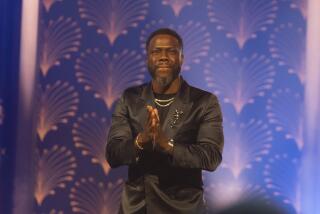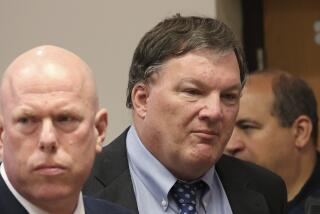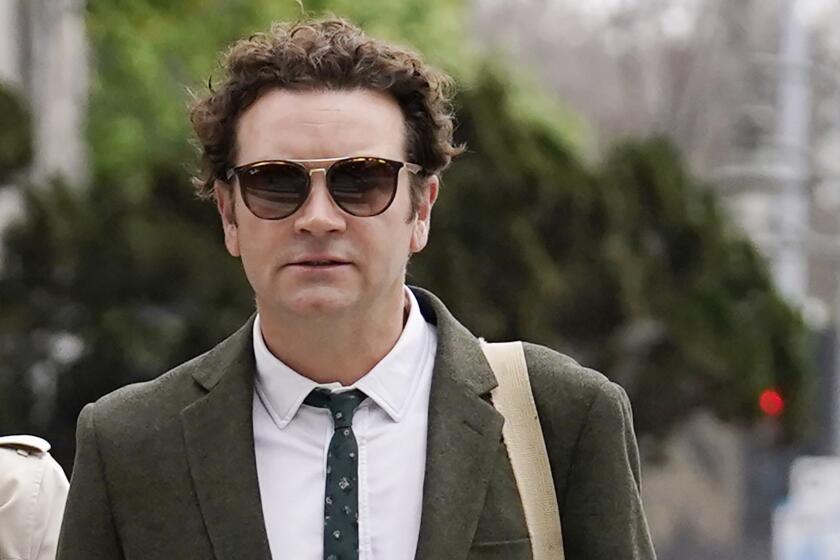Defense in the Kraft Trial Is Ready to Make Its Case
Randy Steven Kraft, whom prosecutors call the worst serial killer the country has ever seen, vowed 5 years ago that the world would see him in a different light when his side of the story was finally told.
That time is finally here.
Monday at 9:15 a.m., after Superior Court Judge Donald A. McCartin seats the 12 jurors and eight alternates in his cavernous Santa Ana courtroom, Kraft attorneys C. Thomas McDonald and James G. Merwin will call their first witnesses in his defense.
They are already worried whether the jurors can give them a fair hearing.
âI have said at every possible opportunity that our client cannot get a fair trial the way it is now, with all these murder counts in a single trial,â McDonald said last week. âBut we are going to do the best we can.â
Kraft, a 43-year-old computer expert who lived a quiet life style in Long Beachâs gay community, is charged with 16 Orange County murders.
But prosecutors claim Kraftâs death toll goes far beyond Orange County. He is accused in court papers of a total of 45 murders--in Southern California, Oregon and Michigan. All the victims were young men. Most were sexually abused in some fashion.
And even those staggering numbers, prosecutors claim, do not adequately describe Kraftâs 11-year crime spree.
They contend that a list found in the trunk of Kraftâs car when he was arrested May 14, 1983, is a coded score card of how many people he has killed. The list has 61 entries. Three of those entries, prosecutors insist, stand for double murders: â2 in 1 Hitch,â â2 in 1 Beachâ and âGR2.â That would be 64.
Then there is 25-year-old Terry Lee Gambrel, the Marine found dead in Kraftâs car when Kraft was arrested for suspected drunk driving. Prosecutors say Kraft did not have time to put Gambrel on the list.
That would total 65 murders.
More Than Bundy, Corona
It would be more murders than Ted Bundy and Juan Corona combined. Bundy, executed last week in Florida, was suspected of killing up to 36 women in five states. Corona was convicted in the murders of 25 itinerant farm workers, more than anyone else in California.
Yet despite so many accusations against Kraft by Orange County prosecutors and those in other jurisdictions, his case has gained little media attention outside Orange County.
On Sept. 5, the opening day of the prosecution testimony against Kraft, more than two dozen representatives of major newspapers, wire services, television and radio stations were present. The next day, media interest dwindled to a trickle.
McCartinâs courtroom, the largest in the Santa Ana courthouse with public seating for 142, has been three-fourths empty during most of the trial.
Part of the reason may be that each victimâs death received little attention. Many of them were Marines whose deaths only got major attention in their hometowns, scattered about the country. Several others were transients. And the deaths often occurred in separate jurisdictions.
Oregon-Orange County Link
For example, although a series of six Oregon deaths between 1980 and 1983 was linked to many unsolved Orange County deaths, that connection was not made public until after Kraftâs arrest, for investigative reasons.
James A. Sidebotham, a senior investigator for the Orange County Sheriffâs Department, had been in touch with Oregon authorities as early as 1980. Both sides agreed that their unknown killer was operating for some reason in both locations.
Some Orange County law enforcement officials say that the district attorneyâs officeâs deliberate decision not to publicize the Kraft case has helped hold down public attention.
Prosecutor Brown, for example, has declined to appear on camera outside the courtroom and has given only brief statements about the case to the news media since Kraftâs preliminary hearing in 1983.
âIf this were in Los Angeles, (District Attorney) Ira Reiner would have seen to it the case stayed on the front page every day,â one courthouse observer theorized.
Some observers say another reason Kraft has received little national attention is that the murders were considered homosexual killings. Although most of the victims were not homosexuals, all were males and the killer had either emasculated, sexually mutilated or molested most of them.
Victims âBig Enoughâ
âBundyâs victims were all women, and they are viewed as more vulnerable,â said one official familiar with the Kraft case. âThere could be some public perception that (victims listed by prosecutors in the Kraft case) were big enough (that) they should have been able to take care of themselves.â
One law enforcement official believes that the public, saturated with news about so many serial killings, has become numb to the numbers.
Yet if media attention seems to be lacking outside Orange County, Kraftâs attorneys claim that local news coverage has been so overwhelming that Kraft cannot get a fair trial here. Twice they have asked for a change of venue, only to be denied by Orange County judges.
But now that the trial has begun, more significant to the defense is their theory that the 16 murders with which Kraft is charged will overwhelm the jury.
âWe fear that it will take a monumental effort by the jurors to critically evaluate each count,â McDonald said last week. âBut with this many murders, I donât know if they can do that.â
Lawyersâ Conversation
If the media are not clamoring for details of Kraftâs defense strategy, others certainly are. On nearly all of the 11 floors of the Orange County courthouse, Kraftâs name works its way into lawyersâ conversation as they wonder whether Kraft himself will take the witness stand. Kraft attorney McDonald said that decision has not been made.
âWe will have to see how it goes the next few weeks,â McDonald said.
Asked whom he will call to the stand, McDonald answered: âOur client maintains he is innocent of all of these crimes, and we are going to put on a case that we believe will support that contention for the jurors. Thatâs the best I can say right now.â
McDonald has acknowledged some details of what jurors might see:
- Testimony from some law enforcement officers that they had numerous suspects under investigation in many of these killings, but that those investigations stopped with Kraftâs arrest. Kraft attorneys have demanded police documents to show jurors which people may have been suspects, and why.
- A defense argument that âMr. Brown has not produced one shred of evidence showing any link whatsoever between Mr. Kraft and half of these crimes.â
Although there is no physical evidence in eight of the 16 deaths, Brown has argued that all 16 fit a common pattern. And prosecutors consider the physical evidence strong in the other eight.
For example, Kraftâs fingerprints were found on a broken bottle near one victimâs body. Four victims are linked to Kraft through color pictures found in his car. Two are linked to him through fiber evidence.
Then there is Gambrel. Prosecution evidence introduced at the trial shows he was found dead in Kraftâs car with strangulation marks on his neck and faint marks on his wrists. His shoelaces were found in the car, knotted to make bindings. The prosecution claims he was strangled with his own belt, found in the back seat.
But prosecutors say that the most damaging evidence is the list found in Kraftâs car. Kraftâs attorneys have repeatedly argued that the list is meaningless, that it could be anything. Kraft himself said in an interview with The Times that it is a coded list of friends of his and his âmate.â
But Brown claims, for example, that âNew Yearâs Eveâ on the list stands for Mark Howard Hall, who disappeared on a New Yearâs Eve. âParking Lotâ on the list stands for Keith Daven Crotwell, who was last seen alive in the parking lot at Belmont Plaza in Long Beach, Brown contends. âMC HB,â Brown claims, stands for Wyatt Loggins, a Marine who was last seen by friends walking alone along the beach in Huntington Beach.
Entries on List
Prosecutor Brown ended his case in November by linking 14 of the 16 victims to entries on the list.
When the jurors return Monday, it will be for the first time in more than 2 months. Judge McCartin planned on a 10-day holiday for the jurors. But Kraft lawyers asked twice for more time.
McDonald said last week that âwe have been working at a furious paceâ to be ready Monday. He estimated that the defense will take âroughly 3 weeksâ to present its testimony.
Since the 1983 Times interview, Kraft has not talked to the press. But in that interview, he expressed impatience that he could not tell his story in court right away.
âIf we wait for the day of the jury trial, itâs like deciding my fate on the flip of a coin,â he said then.
More to Read
Sign up for Essential California
The most important California stories and recommendations in your inbox every morning.
You may occasionally receive promotional content from the Los Angeles Times.










